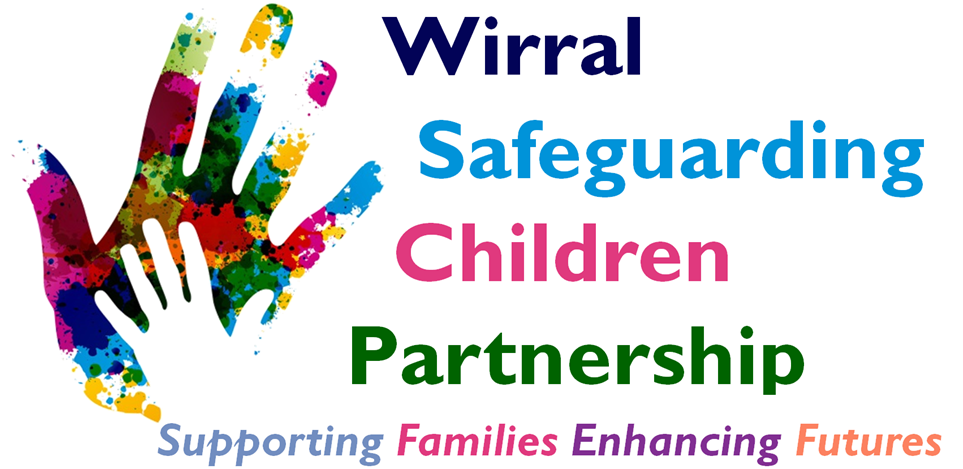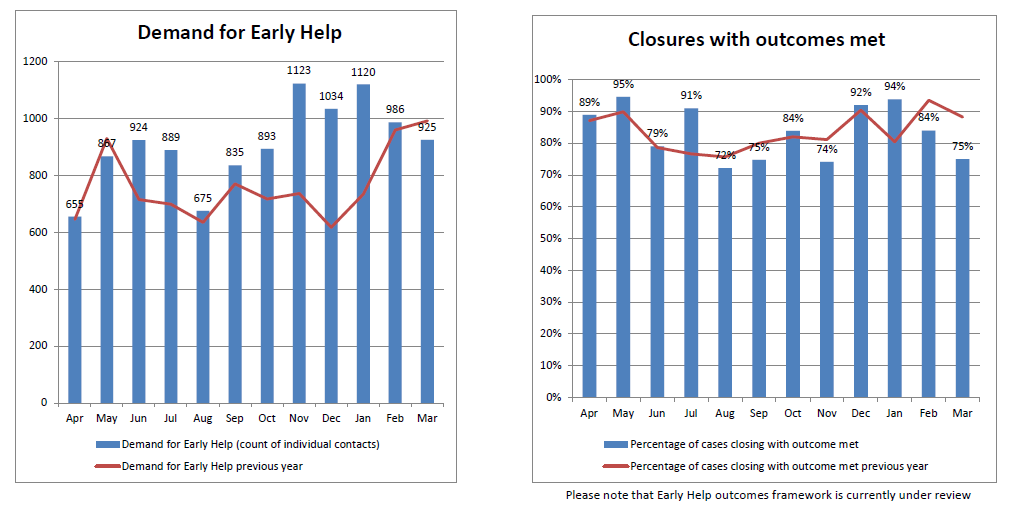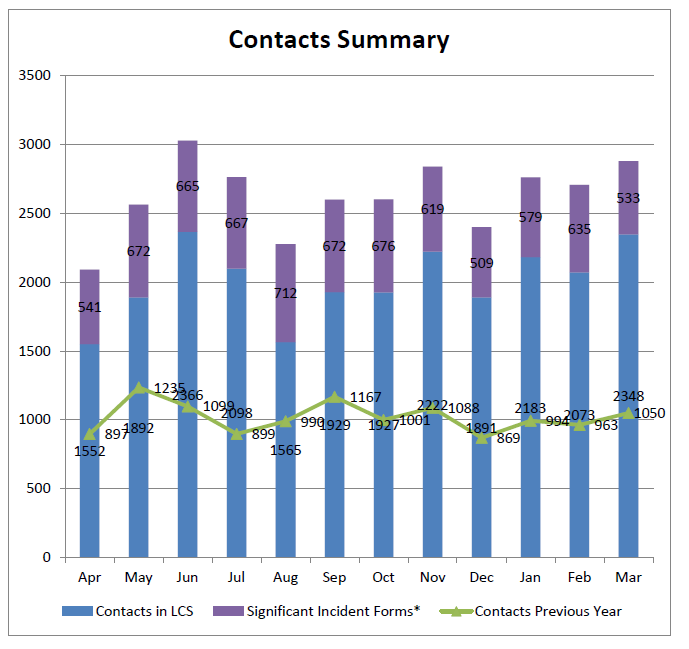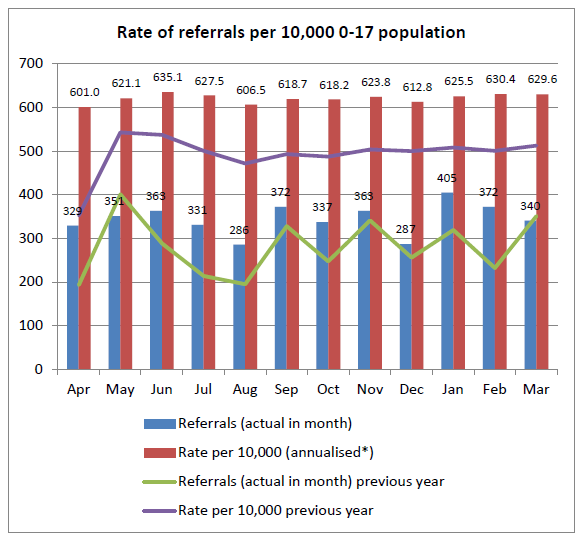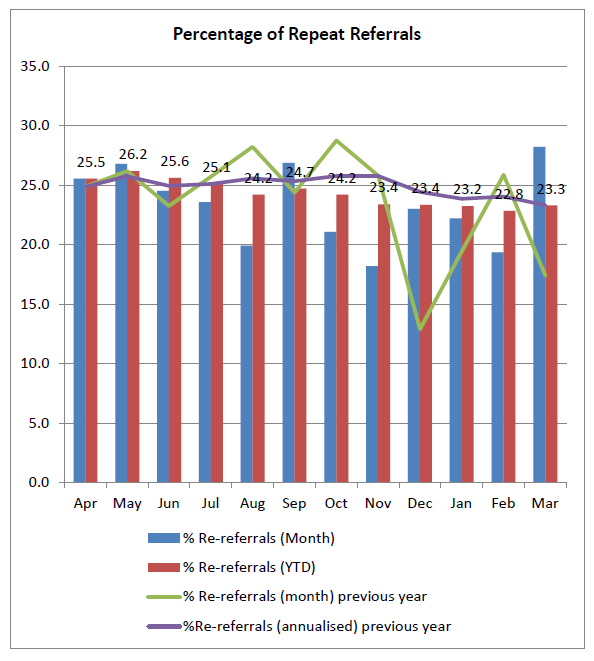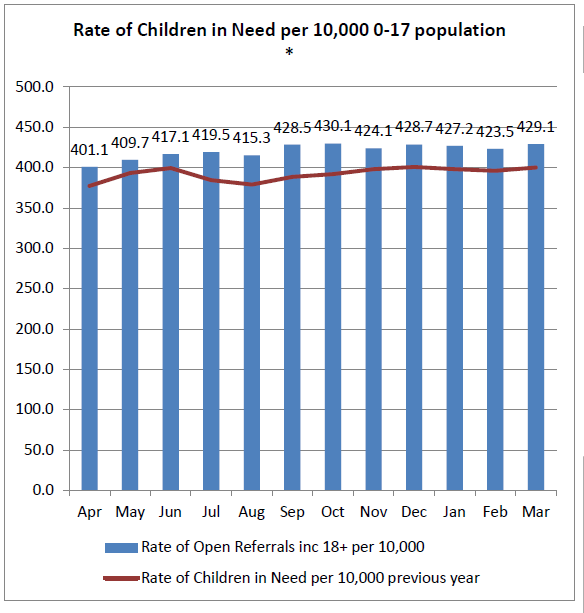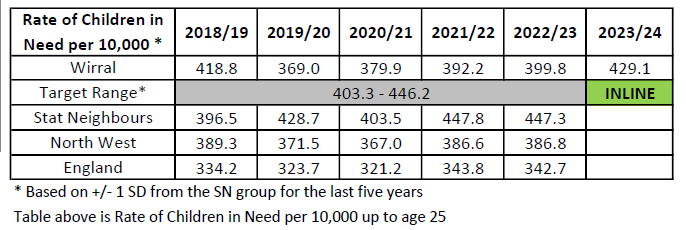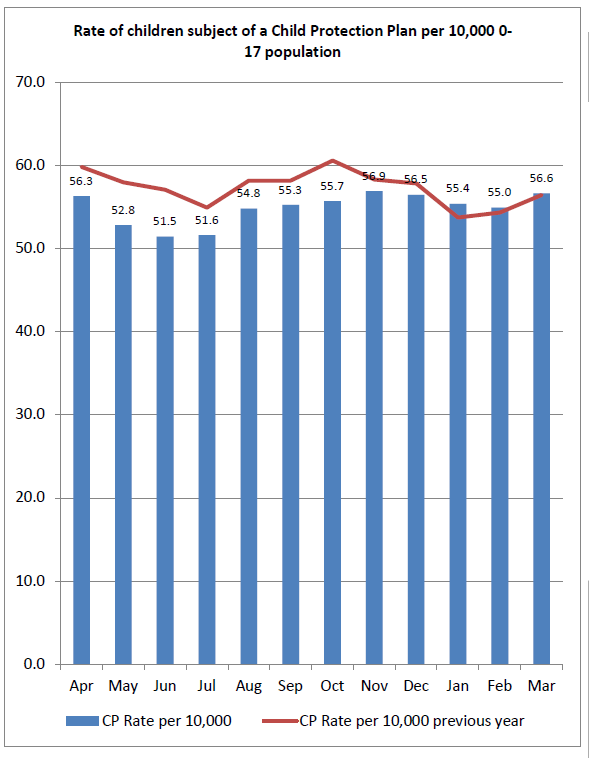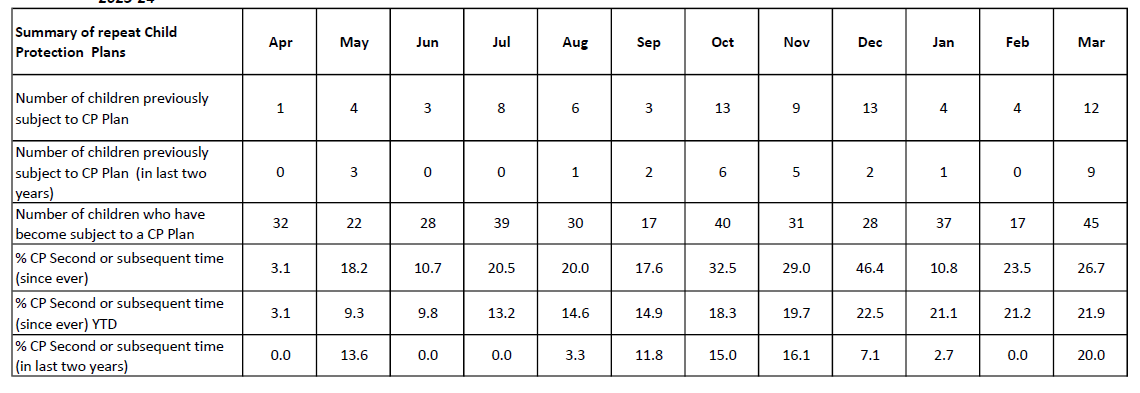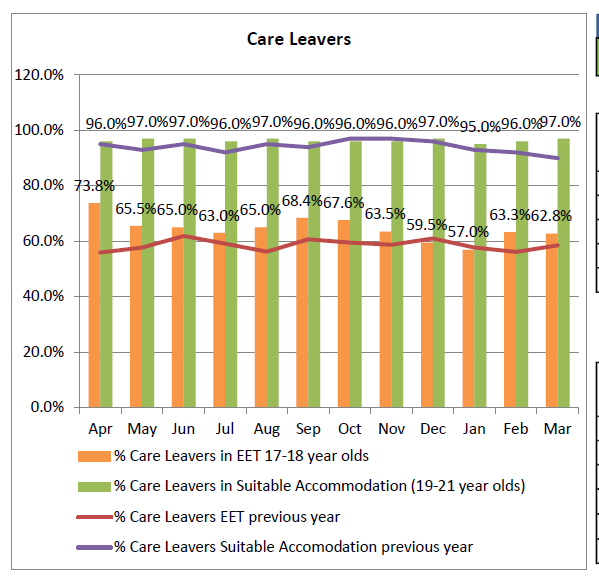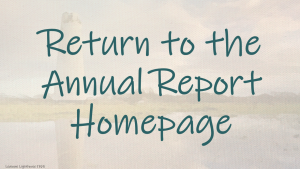Annual Report 2023 – Journey of the Child
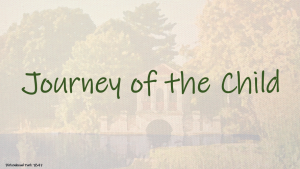
Chapter Contents
- Early Help and Prevention
- Family Help
- Child in Need
- Child Protection
- Children in Care and Care Leavers
- Performance Information
Early Help
The chart below illustrates the demand for Early Help Services by month from the start of the financial year until 31st March 2024. These numbers illustrate individual contacts.
As shown in the graph, the demand for Early Help has increased significantly during 2023, with the highest number of contacts recorded as 1123 in November 2023. Closures with outcome met has also seen a steady increase, however there was a period of decrease during August and September.
Children’s Social Care
Contacts and Referrals
Between April 2023 and March 2024, Wirral’s Integrated Front Door received a total of 24026 contacts compared to 12252 during the same period in 2022.
Wirral has continued to receive a very high number of contacts. The figures this year appear significantly higher due to all request for services now being included in contact numbers.
The graph below shows the number of contacts received by month during 2023.
Referrals
There has been a significant increase in the rate of referrals received during 2023/24 compared to 2022/23. For example, in January 2024 the rate of referrals per 10,000 was 625.5 compared to 508.2 in January 2023. This is below statutory neighbours (644), but above North West (529.6) and the national (544.5).
The increase in referrals has placed additional pressure on the service and has resulted in periodic increase in caseloads. Along with the increase in numbers there is an increase in complexity, we have had cohorts of children between the ages of 10 – 13 not previously known to either EH of CSC who appear to have escalated quickly due to safeguarding issues around behaviour, mental health, going missing and poor school attendance.
We have noticed behaviours in younger children that previously we might have expected in 14>15-year-olds. The increase equates to approximately 17 additional referrals for assessment each week since April, this equates to social work caseload – without the corresponding increase in social work capacity.
The overall number of referrals between April 2023 and March 2024 (year to date) is 4136 compared to 3365 for the previous year.
Re-referrals
The percentage of re-referrals at the end of March 2024 (23.3%) equals the same end of year percentage in March 2023.
Year to date figures show nearly a quarter (23.3%) of all referrals are repeat referrals and this KPI is firmly red and high compared to statutory neighbours target range of 19.1% – 21.5%.
Re-referrals continue to be higher than statistical neighbours, the highest re referrals relate to issues of domestic abuse. While we have recommended specific oversight from managers regarding an audit to determine whether we have prematurely closed, the issue is new and different, the family have not taken up EH as they agreed. We have not completed a recent planned dip sample across the teams but have the facility to do that and provide a report on outcomes. This audit report will then form the basis of plans to improve in this area.
Child in Need
At the end of March 2024, the Child in need (CiN) figure (all children with an open referral, including care leavers) was 2819, compared to 2629 for the same period in 2023.
The CiN rate (429.1) still places Wirral in line with statistical neighbours. The graph below shows the rate of CiN per 10,000 of the population in Wirral. While we are in line with statistical neighbours, this is an area where we need to remain focused and ensure that plans are progressed and stepped down or up in a timely manner.
Child Protection
At the end of March 2024, there were a total of 372 children subject to a Child Protection (CP) plan compared to 371 at the same period in 2023.
CP numbers have decreased slightly throughout the year and have remained under 400 since February 2022. The number of CP starters has decreased to 28 and is below the average for last year (34)
The percentage of repeat CP (ever) for the end of March 2024 is 21.9%. In the month of March2024, 12 out of 45 new CP’s were previously on a plan. Number of children ceasing on a CP plan was 24 in March (February- 22 and January- 40).
The table below illustrates the number of children who have been subject to a Child Protection plan for a second or subsequent time.
it is important that the context for a repeat plan for an individual child is understood. Repeat plans can be appropriate if there has been a substantial change to the child’s circumstances that have led to a new plan of protection.
Children Looked After (CLA)
At the end of March 2024, Wirral had 777 Looked After Children this is a reduction from 781 in the previous year. Whilst number of Children Looked After by Wirral have reduced slightly this is above that of similar Local Authorities.
There are a number of work strands in place to safely reduce the number of children by the discharge of care orders for children returning to parents or on Special Guardianship Orders. Children who are Looked After by Wirral include children subject to full care orders, interim care orders during care proceedings and those subject to Section 20 voluntarily accommodation.
Children Looked After are subject to regular statutory visits from social workers and have individualised care plans completed to ensure their needs are met along with statutory reviews being undertaken.
The graph below illustrates the current CLA rate per 10,000 compared with the previous year.
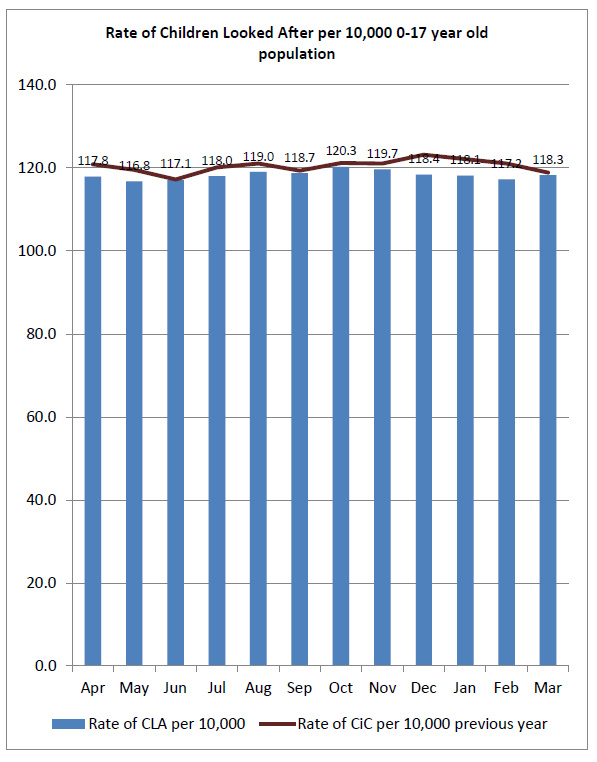
Care Leavers
At the end of March 2024, 307 care leavers (aged between 17 – 24) were receiving support from LA services compared to 298 in March 2023. 97.6% of care leavers (aged 17 – 21) are in touch every 8 weeks.
The graph above illustrates the percentage of care leavers in education, employment or training aged between 17-18 years old (62.8%) and between 19-21 years old (59.5%) at the end of the financial year. There has been an increase compared to the end of March 2023 (58% and 58.6%) December 2022.
The graph also shows the percentage of care leavers in suitable accommodation, for 17-18 year olds, this was 90% in March 2024 which has remained the same in comparison to March 2023. For 19-21 year olds, 97% of care leavers were in suitable accommodation in March 2024, which is 1% more than March 2023.
To go to the Introduction click here
To go to Independent Scrutiny click here
To go to Learning from Case Reviews click here
To go to Key Activity click here
To go to Multi-agency Working click here
To go to the Big Learn Event click here
To go to Progress Against Priorities click here
To go to the Business Plan click here
To go to the Glossary click here
